The science of touch
Integration of VR-haptic tech into Ireland and Northern Ireland’s dental curriculum is underway
Word: Will Peakin, Photography: VR-Haptic Thinkers Meetup
It began with a conversation over a cup of coffee in Kuopio, Finland, at the University of Eastern Finland’s Institute of Dentistry. An informal group of university teachers, researchers and dental specialists were discussing the possibilities of virtual reality haptic technologies (VR-haptics) in dental education.
Imagine, as a student, practising and feeling the delicate resistance of a tooth as you drill, the subtle vibration of a scaler against tartar or even the temperature change when polishing a filling; that is the promise of VR-haptics.
Through specialised devices and software, haptic simulators mimic the physical sensations of real-world dental procedures, creating an immersive and interactive training environment.
“Haptics: the use of technology that stimulates the senses of touch and motion, especially to reproduce in remote operation or computer simulation the sensations that would be felt by a user interacting directly with physical objects.”
– Robotics@UMass Amhers.
One of the group’s conclusions was that successful integration into the curriculum would depend on collaboration between ‘haptic thinkers’ around the world. Last November, a newly established formal group convened at the university – and online – for the first International VR-Haptic Thinkers Meetup1 involving more than 200 scientists, dentists and students interested in VR-haptics and dental education.
The aims of the meetup were to:
- Advance knowledge on the usability of VR-haptics in preclinical, clinical and postgraduate dental training.
- Share experimental data, challenges and solutions, and reinforce collaborative capacity initiatives in education and research.
- Engage with universities’ policymakers to address the benefits of VR-haptics in manual dexterity development.
- Bring together those interested in dental education to strengthen the existing partnerships and extend networking.
“From its humble beginnings over a coffee to becoming a global group of VR-haptic thinkers, the journey has been nothing short of remarkable,” said a spokesperson following the event. “VR-Haptic Thinkers are only just getting started. We will continue to dream, do cross-border research and work towards free-to-join hybrid meetups – for a future where most dental schools are empowered by the transformative possibilities of VR-haptics.”
Dental education traditionally uses well-proven phantom head-based teaching methods and clinical training. But the use of VR-haptics has become more prevalent in dental education in the past few years. Students can practice handling drills, scalers and polishers; experiencing the resistance of different tooth materials and learning to control pressure with precision. This tactile feedback builds muscle memory and dexterity, translating into smoother, more controlled movements when they treat real patients.
In addition to instrument handling, haptic simulators offer an opportunity to practise dental procedures. From preparing cavities to placing fillings and performing root canals, students can rehearse on a variety of virtual teeth with varying textures and densities. The simulators provide real-time feedback on tool placement, pressure and technique, helping students refine their skills and build confidence before stepping into the clinic.
The power of haptic technology extends beyond mimicking procedures. Some advanced simulators integrate virtual X-rays and other diagnostic tools, allowing students to train in identifying dental issues like caries, periodontal disease and even abnormalities in jaw structure. This immersive approach fosters critical thinking and decision-making skills, preparing students to diagnose and plan treatment for patients in a virtual, risk-free environment.
Its backers say that by implementing VR-haptic dental trainers in preclinical and clinical courses it is possible to improve students’ learning curves and outcomes. In addition, they add, studies have shown that students feel that their self-confidence improves after practising within the VR-haptic environment.
Last year, a review of their use in more than 40 universities across China was published2. It concluded: “Haptic simulation technology is a valuable complementary tool to the phantom head in dental education. The combined utilisation of these two training devices has been superior to either in isolation.
“However, there is a lack of research on the sequencing of the two systems, as well as the appropriate distribution of curriculum between them. It is necessary for educators to organise or engage in experience sharing, collaboration and knowledge dissemination. These actions are essential for promoting effective teaching within dental educational institutions.”
In January, a comparison of the effectiveness of virtual reality-based education and conventional teaching methods in dental education was published3. It concluded: “Based on our findings, adding haptic technology to virtual reality can improve students’ practical skills, hand skills, theoretical knowledge, self-confidence and learning environment.
“Although a fair amount of research needs to be done, notably on cost-effectiveness, student satisfaction and other potentially adverse effects, virtual reality is a growing phenomenon with immense potential.”
In 2021, Leeds University’s School of Dentistry installed haptic simulators running in-house software based on real patients’ dental models, including anatomically correct contact points and gingival margins; the first in the world to do so.
In March 2021, the Northern Ireland Medical and Dental Training Agency (NIMDTA) announced the opening of its dental simulation suite, home to 10 VR-haptic training units. Last year, Queens University Belfast ran a pilot study at NIMDTA, involving 55 second-year dental students. A range of standardised tasks were undertaken by each student and automatically graded as a pass or fail by the trainer using set criteria.
These selected tasks were analogous to those carried out by 2BDS students in the Clinical Techniques Laboratory. Cavity preparation dimensions and iatrogenic damage were measured and scored. To obtain feedback on the training units, an anonymised questionnaire was completed by the students at the end of the VR teaching sessions.
Outcomes included:
- 93 per cent (51 students) felt the training session improved their visual-motor skills.
- 95 per cent (52 students) felt using Simodont in the future would improve their preclinical skills.
- 95 per cent (52 students) thought of Simodont as a useful educational tool in UG dental training programs.
“It is clear the majority of 2BDS students found [the trainer] helpful in pre-clinical dental skills training,” commented one of the authors. “Using this technology has shown to be beneficial and more sustainable for 2BDS students’ progression from simulation to reality on patient clinics.”
NIMDTA’s launch of its dental simulation suite coincided the adoption of haptic trainers by Leeds University. The working relationship between the units’ makers and the school’s digital dentistry group meant their introduction was informed by the needs and use-cases identified at Leeds.
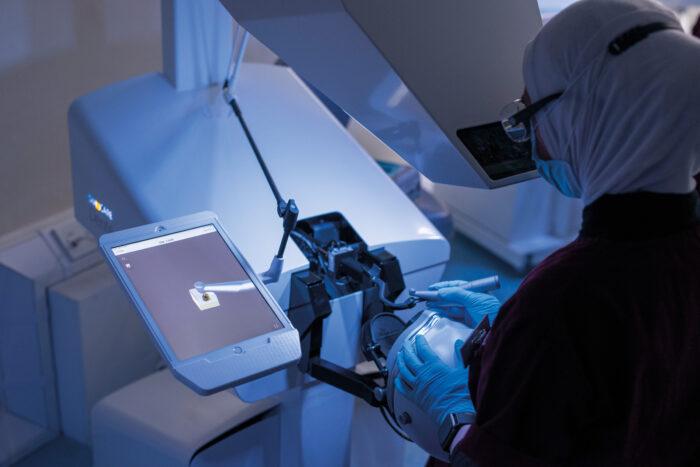
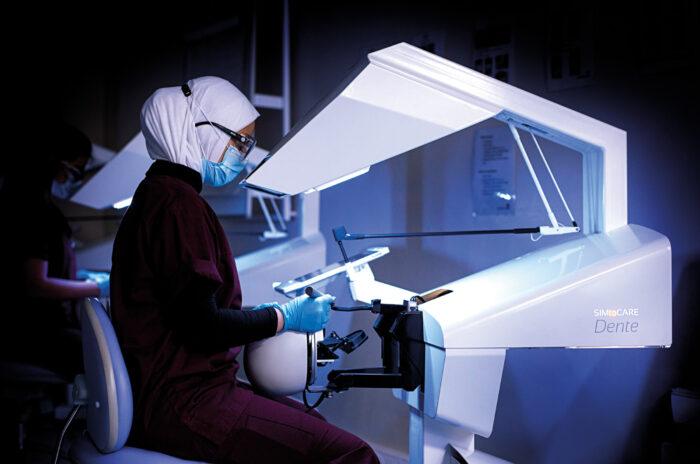
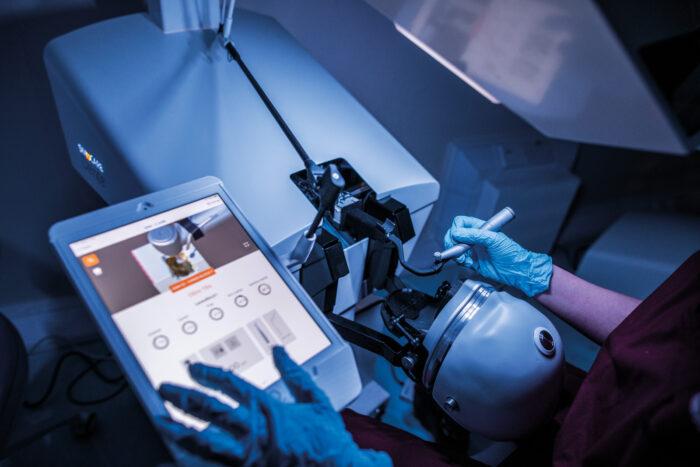
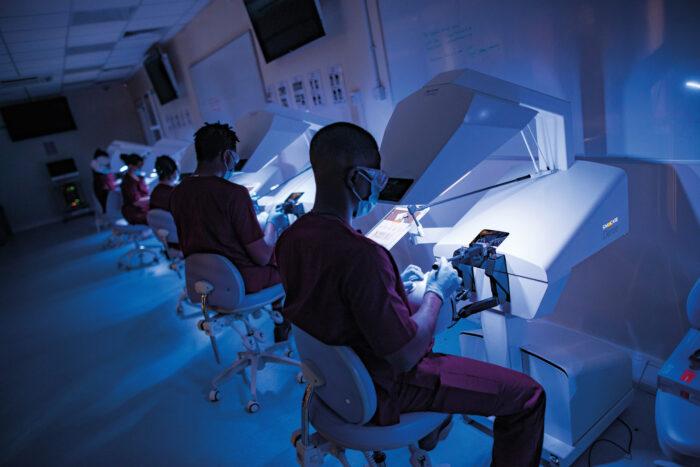
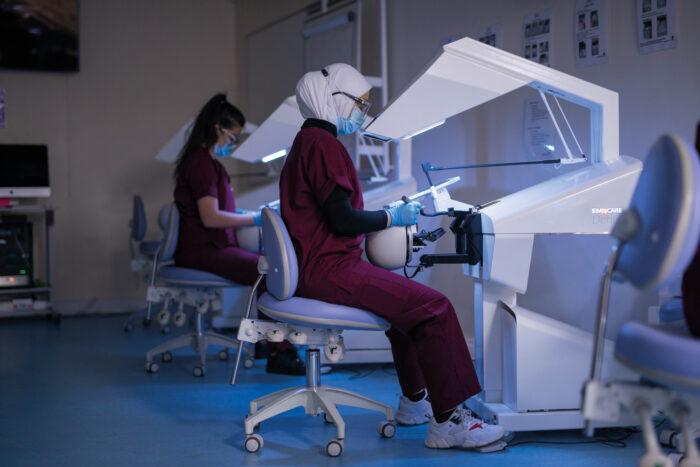
World-leading, in-house software has led to Leeds being the first dental school in the world to offer custom haptic training cases based on real patients’ dental models, including anatomically correct contact points and gingival margins; both crucial during the preparation of crowns. The simulators also offer haptic cases aligned to the bespoke 3D printed training models currently used in the preclinical skills laboratories, with additional cases lined up to be produced, physically and virtually, going forward.
Future work will focus on expanding students’ clinical awareness of the high biological variation encountered in root canal morphology by presenting a catalogue of true, scanned tooth root morphologies, enabling students to gain an understanding of natural variation within endodontics. To support this work, the school invested in a new nano CT scanner.
Paul Coulthard, the then Dean, described the investment in 42 VR-haptic training units – understood to be the highest number installed by any dental school in the world – as “transformational”.
He added: “The scale allows us to fully integrate artificial intelligence (AI) learning into our undergraduate curriculum and postgraduate training. Importantly we can undertake pedagogical research to fully explore the advantages for learning and patient benefit.”
At the VR-Haptic Thinkers Meetup, Professor Barry Quinn, Secretary General of the Association of Dental Education in Europe (ADEE), said simulation had become an indispensable tool in the training of dental and medical students.
“We should not be sending any of our students to do a procedure for the first time on a patient,” he said.
Associate Professor Marjoke M Vervoorn, of the Academic Centre for Dentistry Amsterdam (ACTA), added: “Technology enables users to collect data on performance and thus is a valuable tool in enhancing quality assurance.” Lectures and ePosters from the first meetup can be viewed on the Haptic Thinkers website.
Both the ADEE and the American Dental Education Association (ADEA) will be supporting the formation and future meetings of the VR-Haptic Thinkers network.
The second meet-up, ‘VR-Haptic Dentistry, Pedagogy and Curriculum Evolution’, is planned for later this year.
The latest speakers have been announced here.
REFERENCES
- Institute of Dentistry launched VR-Haptic Thinkers Meetup – University of Eastern Finland
- Application of virtual reality and haptics system Simodont in Chinese dental education: A scoping review – European Journal of Dental Education
- Comparison of the effectiveness of virtual reality-based education and conventional teaching methods in dental education: a systematic review – US National Library of Medicine – PubMed
Tags: AR, Conference, Event, Haptics, meeting, Meetup, technology, Touch
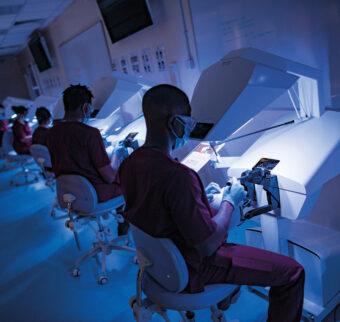
You must be logged in to post a comment.